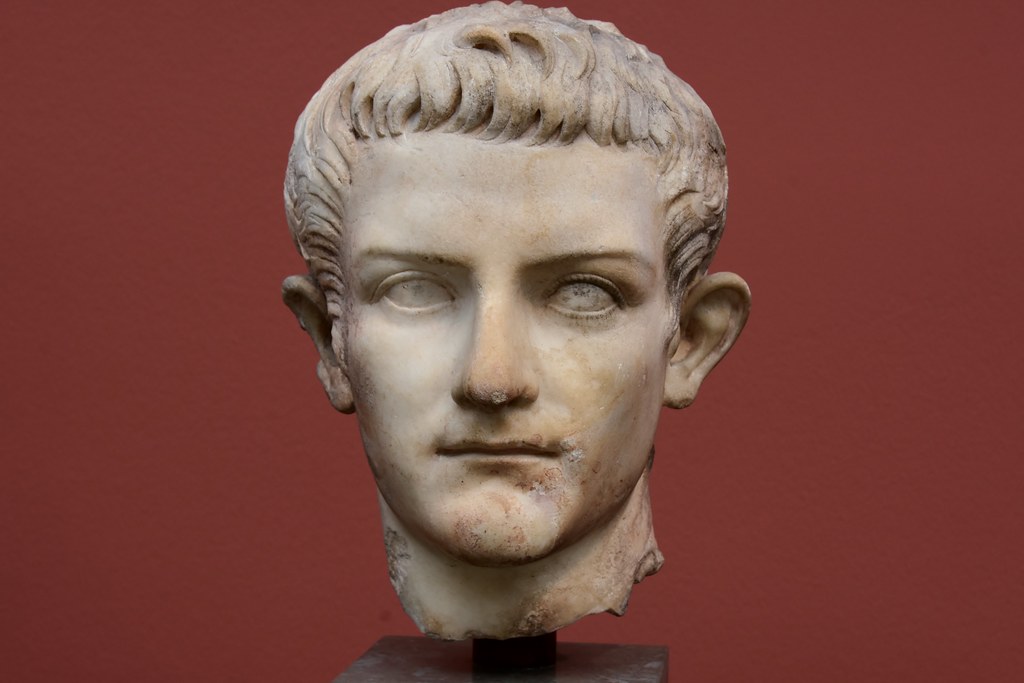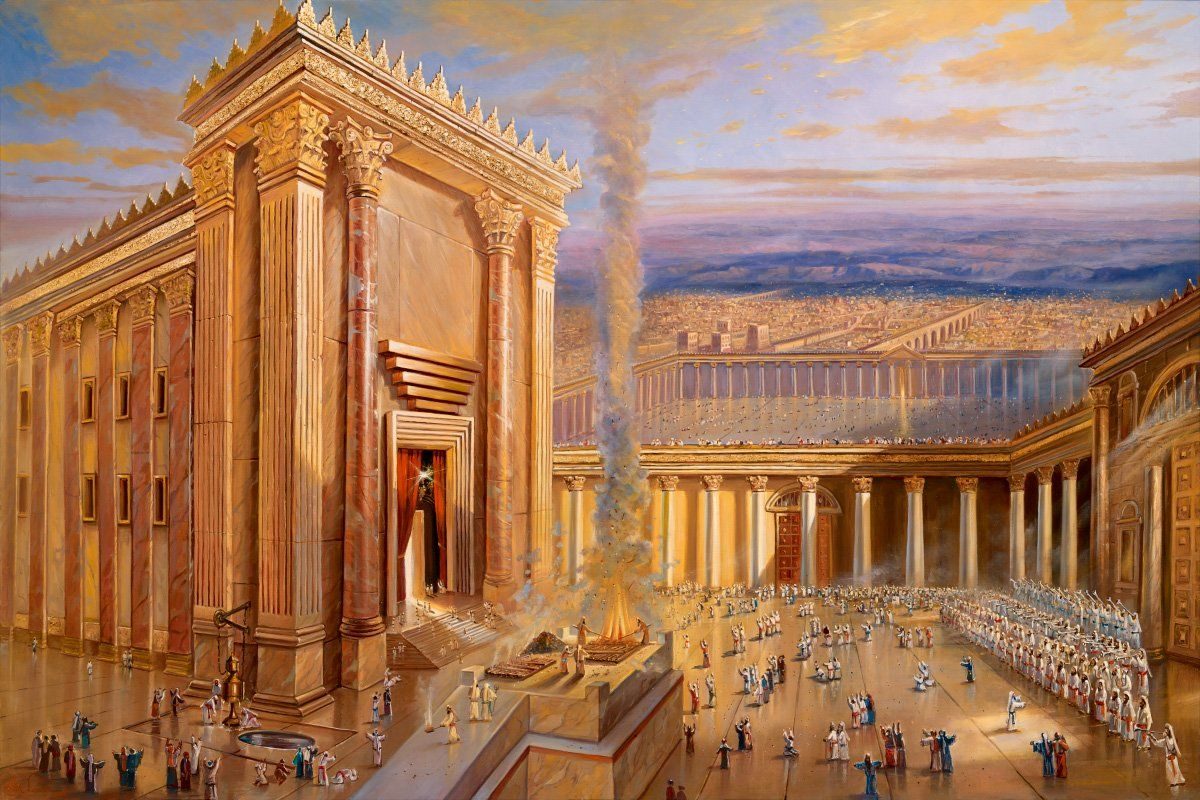Cover image “The Second Holy Temple in Jerusalem” by Alex Levin. Web: www.artlevin.com
In the previous post, we looked at Caligula’s reception of Philo’s Jewish Embassy in Rome. The meeting, documented by a Jewish grammarian, is invaluable as it provides one of the few non-Roman perspectives on the emperor Caligula, elsewhere portrayed as mad, bad, and dangerous-to-know.
Today’s post looks at another run-in between Caligula and the Jews under the Roman Empire. Specifically, it deals with Caligula’s attempt to erect a statue of himself in the Temple of Jerusalem, thus desecrating the symbolic centre of the Jewish Diaspora.
The Temple of Jerusalem, and within it the Holiest of Holies, lay at the symbolic heart of Judaism. It provided a focal point for the Jews, both at home in Judea and dispersed across the Jewish Diaspora. And it would continue to do so: physically until the Temple’s destruction in 70 CE – spiritually, we could argue, into the present age

Julius Caesar and Augustus, Caligula’s predecessors, had respected the Jews’ autonomy, allowing them to continue worshipping as long as they made token sacrifices to the emperor. Tiberius strayed from this permissive path, but not as much as Caligula, who seems to have taken the Jews’ refusal to recognise him as a god both personally and with ire
Jewish participation in the Imperial Cult
Before we look at Caligula’s attempt to desecrate the Temple, we should remind ourselves of the complicated relationship between the Jews’ freedom to worship and their participation in ’emperor worship’ (the imperial cult).
The first and most important thing to consider is that Judaism prohibits the worship of idols, not least those representing figures of power. A passage in the Mishnah (2nd/3rd century) censures the worship of statues holding anything in their hand, whether that be a bird, a staff, or a sphere (Abodah Zarah 3.1).
The Mishnah is rather ambiguous, though the common denominator of these objects is as symbols of power. It’s likely that the time the Mishnah was written, during the height of the Roman Empire, necessitated such ambiguity. But the Babylonian Talmud, which was written later, is more direct, singling out imperial statues made for worship as the idols to be avoided.
The Jews could offer sacrifices on an emperor’s behalf. They just couldn’t afford him the same honours as a god.
The difference is crucial and was the source of contention between Caligula and the Jews. Indeed, when Philo met Caligula during his embassy, he assured the emperor that nobody excelled the Jews in loyalty to the imperial house, as expressed with “prayers, preparation of votive offerings and quantity of sacrifices, not only at general festivals but also on a daily basis.”
Judging by his decision to desecrate the Temple of Jerusalem with his image, Caligula seems to have been unconvinced.
Caligula tries to desecrate the Temple
Sometime between 39 and 40 CE, Caligula sent orders to Petronius, the governor of the Roman province of Syria. Petronius was to install the emperor’s image within the Temple of Jerusalem, using whatever military force was necessary to see his orders through.

Before even departing from Syria, Petronius found himself confronted with thousands of protesting Jews, pleading with the governor to reconsider. As the news of Caligula’s orders spread, Jews across the Roman Empire reacted in horror. Not for 200 years had they faced such a threat to the fundamentally aniconic and monotheistic nature of their religion.
According to Philo (Embassy to Gaius 203-337), when Agrippa I, Herod Agrippa’s grandson, heard what the emperor was planning to do, he was so shocked he suffered a stroke. Agrippa managed to recover swiftly and fully enough, however, to pen an urgent letter to the emperor imploring him not to go through with his plans.
The question was whether he could manage to persuade Caligula before Petronius and his forces arrived in Jerusalem.
The emperor changes his mind
Meanwhile in Syria, Petronius was in no hurry to march on Jerusalem and install the emperor’s statue. The politically astute governor realised the act would pour fuel on the already flaming tensions between Romans and Jews under Caligula’s rule.
Petronius’ gamble paid off. The time he bought by procrastinating proved enough for the emperor to change his mind, though exactly why Caligula did so is unclear.
One suggestion is that Agrippa’s power of persuasion was enough to convince him that forcing his statue among the Temple of Jerusalem was unwise. Josephus, meanwhile, suggests a more mundane reason: Caligula had promised Agrippa a favour in return for an especially good meal, and on this occasion, Agrippa decided to call it in (Antiquities of the Jews 18.290-309).

Whatever the reason, the crisis was averted, and the Temple of Jerusalem remained unpolluted by pagan iconography. Caligula was the first emperor to try to force Jews to participate in the imperial cult. He was also, as it happens, the last.
Article by Alexander Meddings






